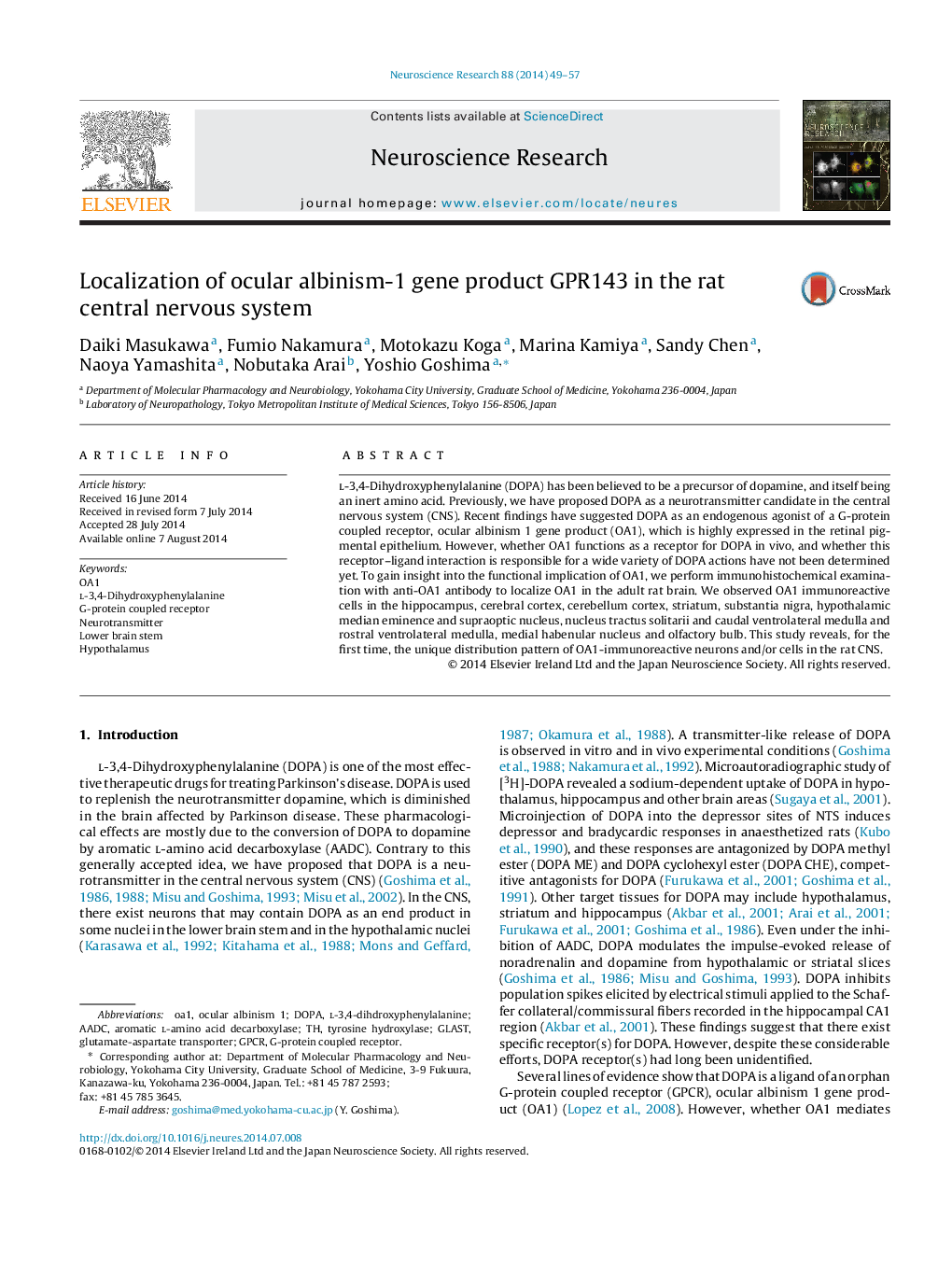| Article ID | Journal | Published Year | Pages | File Type |
|---|---|---|---|---|
| 4351414 | Neuroscience Research | 2014 | 9 Pages |
•We originally proposed DOPA neurotransmitter hypothesis.•OA1, the receptor candidate of DOPA, are distributed in the central nervous system.•OA1-positive cells are localized adjacent to TH-positive neurons.•Our study will provide insights into the new physiological roles of DOPA, new potential targets for DOPA itself.•This finding may lead to fundamental review of DOPA therapy.
l-3,4-Dihydroxyphenylalanine (DOPA) has been believed to be a precursor of dopamine, and itself being an inert amino acid. Previously, we have proposed DOPA as a neurotransmitter candidate in the central nervous system (CNS). Recent findings have suggested DOPA as an endogenous agonist of a G-protein coupled receptor, ocular albinism 1 gene product (OA1), which is highly expressed in the retinal pigmental epithelium. However, whether OA1 functions as a receptor for DOPA in vivo, and whether this receptor–ligand interaction is responsible for a wide variety of DOPA actions have not been determined yet. To gain insight into the functional implication of OA1, we perform immunohistochemical examination with anti-OA1 antibody to localize OA1 in the adult rat brain. We observed OA1 immunoreactive cells in the hippocampus, cerebral cortex, cerebellum cortex, striatum, substantia nigra, hypothalamic median eminence and supraoptic nucleus, nucleus tractus solitarii and caudal ventrolateral medulla and rostral ventrolateral medulla, medial habenular nucleus and olfactory bulb. This study reveals, for the first time, the unique distribution pattern of OA1-immunoreactive neurons and/or cells in the rat CNS.
